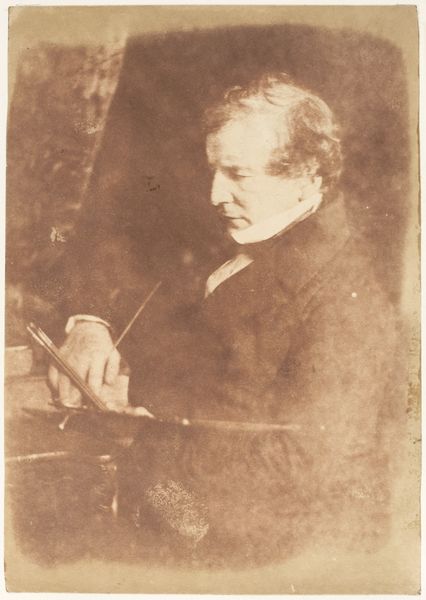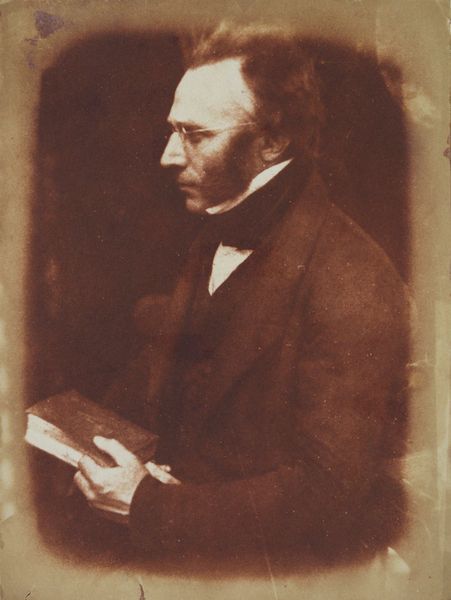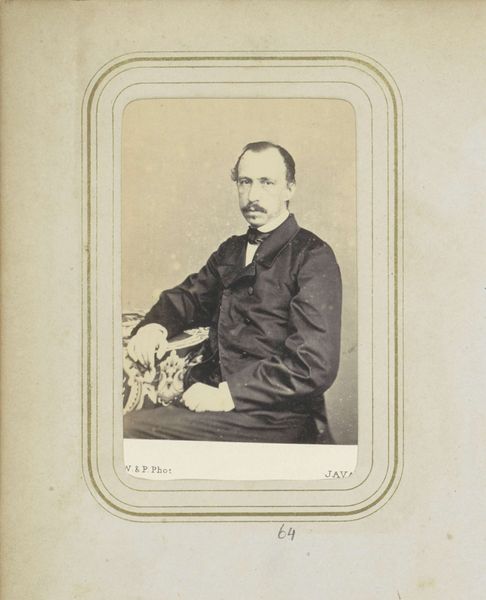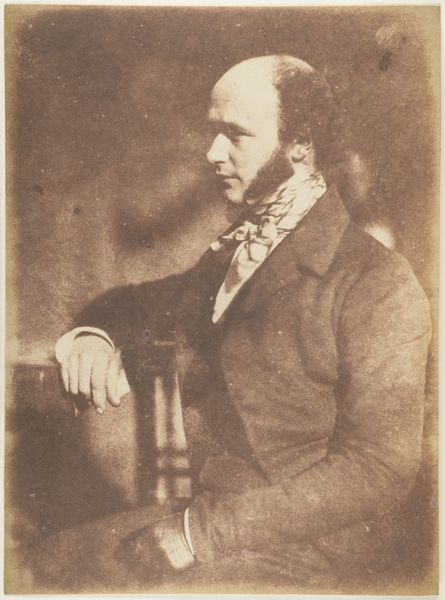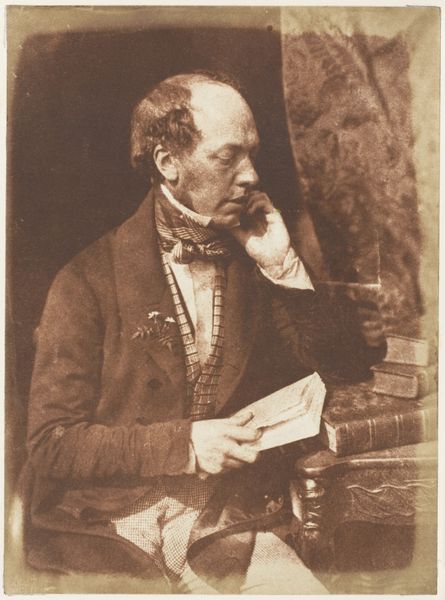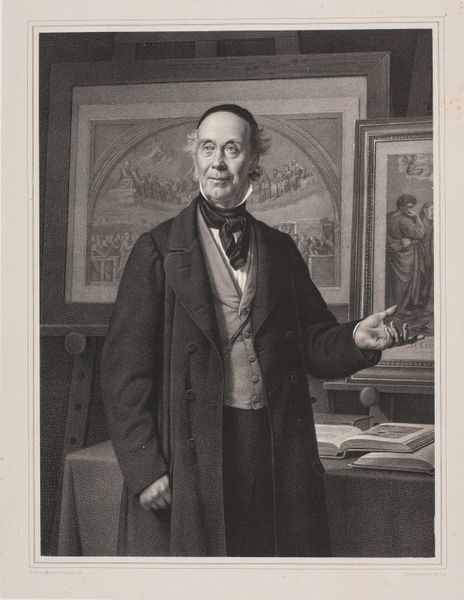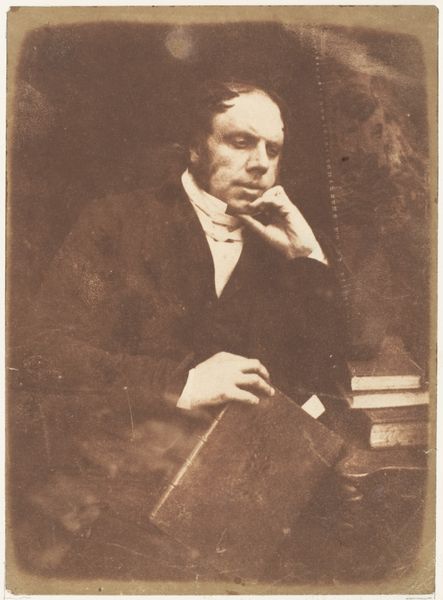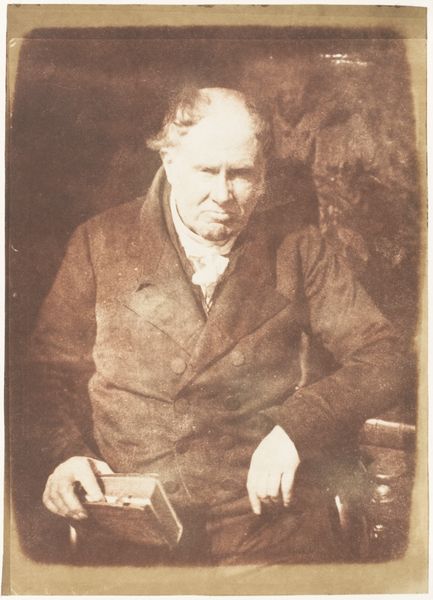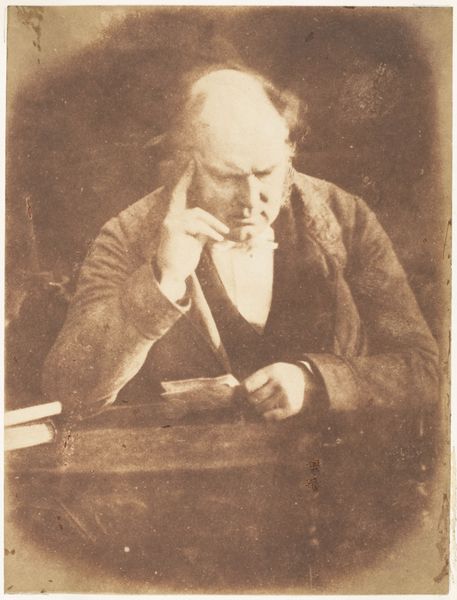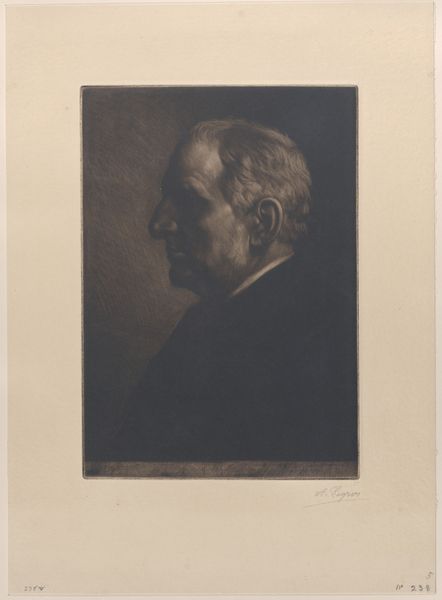
daguerreotype, photography
#
portrait
#
daguerreotype
#
photography
#
historical photography
#
romanticism
#
history-painting
#
realism
Copyright: Public Domain
Curator: This is "Rev. Dr. Keith," a daguerreotype created sometime between 1843 and 1847 by the pioneering Scottish photographers, David Hill and Robert Adamson. Editor: It's striking, isn't it? The image has a solemn, almost melancholic aura. The sepia tones lend an incredible sense of history, of looking directly into the past. Curator: Indeed. Hill and Adamson were at the forefront of using photography for portraiture, moving it beyond simple documentation towards something more artistic. The context of early photography is crucial here, before it became readily available. Editor: Absolutely. And the Reverend’s positioning, hunched slightly over what appears to be a writing slope, is intriguing. It invites speculation about his thoughts, his work, his position in society. The way he almost fades into the background creates an intimacy, although filtered through this antiquated medium. Curator: Precisely. Daguerreotypes, as an early form of photography, often required long exposure times, which influenced how subjects were depicted. Notice how the subject had to be extremely still to create this image with detail and how the light reacts to the metallic surface of the daguerreotype. Editor: It brings up questions of accessibility, too. Who could afford to have their portrait captured like this? How did it influence the public’s perception of status and authority? This is one of the few early photographies of everyday person, who seems far removed from what it looked like in classical painted portaiture. Curator: This photograph can tell us a lot about 19th-century Scotland. The Church’s place in public life, photography as a burgeoning technology shaping identity and memory, the power relations embedded in representation itself. This image acted as an instrument of representation for a new bourgeouise. Editor: It’s a powerful intersection of art, technology, and social history captured in this small metallic plate. It makes me consider the narratives, both visible and obscured, embedded within portraiture. Curator: Well said. It is remarkable to see a piece like this that still manages to invite questions despite its age. Editor: I agree. A captivating and thought-provoking portrait from photography's earliest days.
Comments
No comments
Be the first to comment and join the conversation on the ultimate creative platform.
